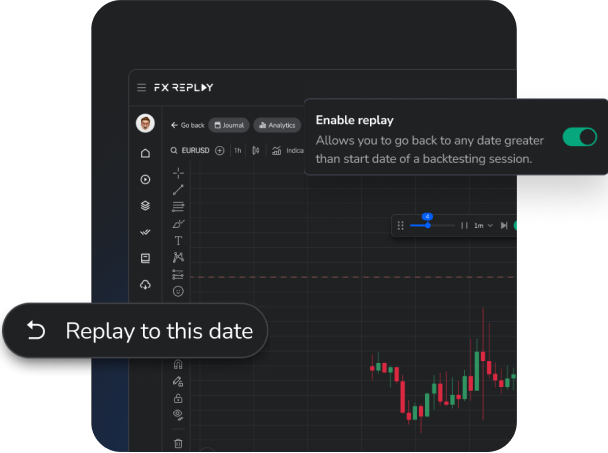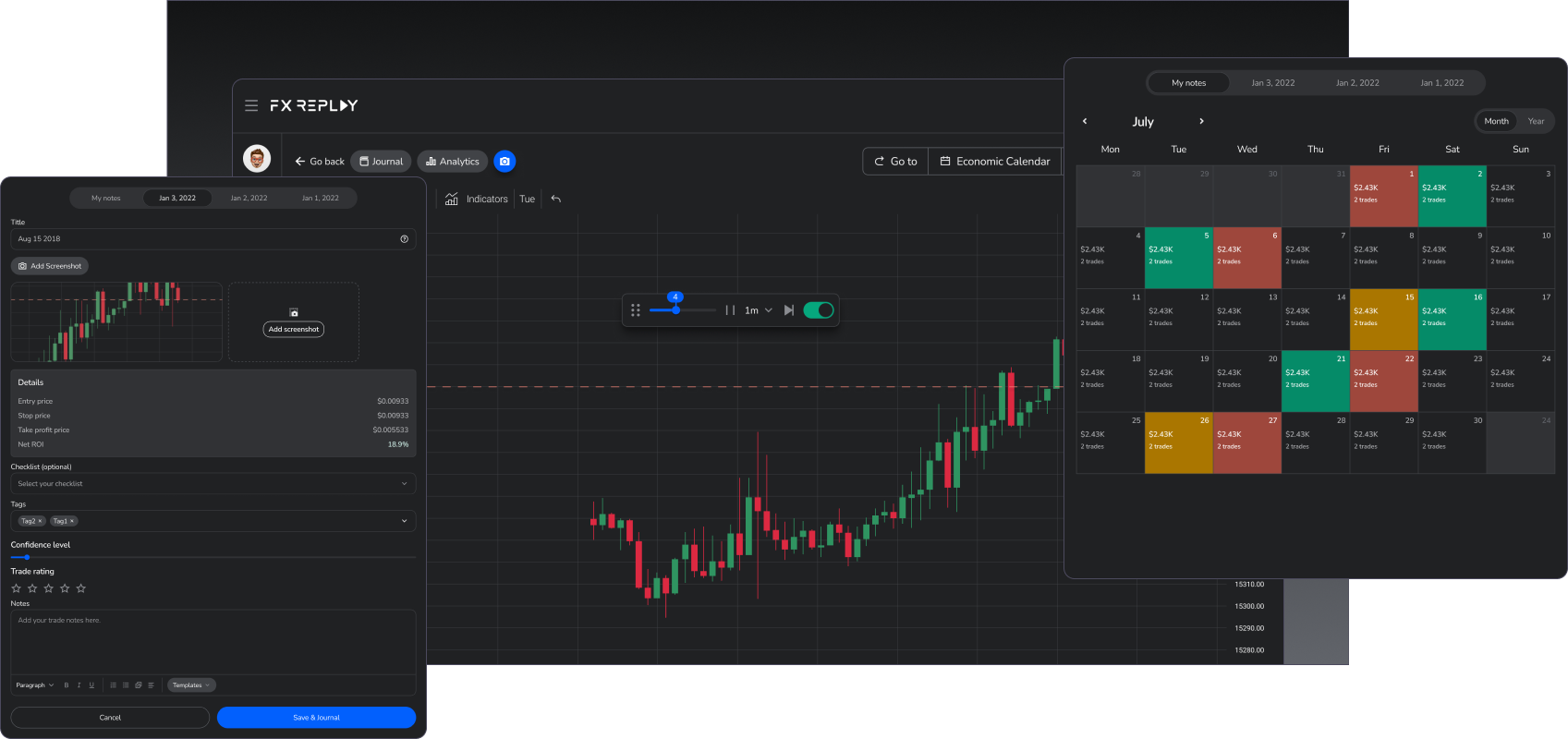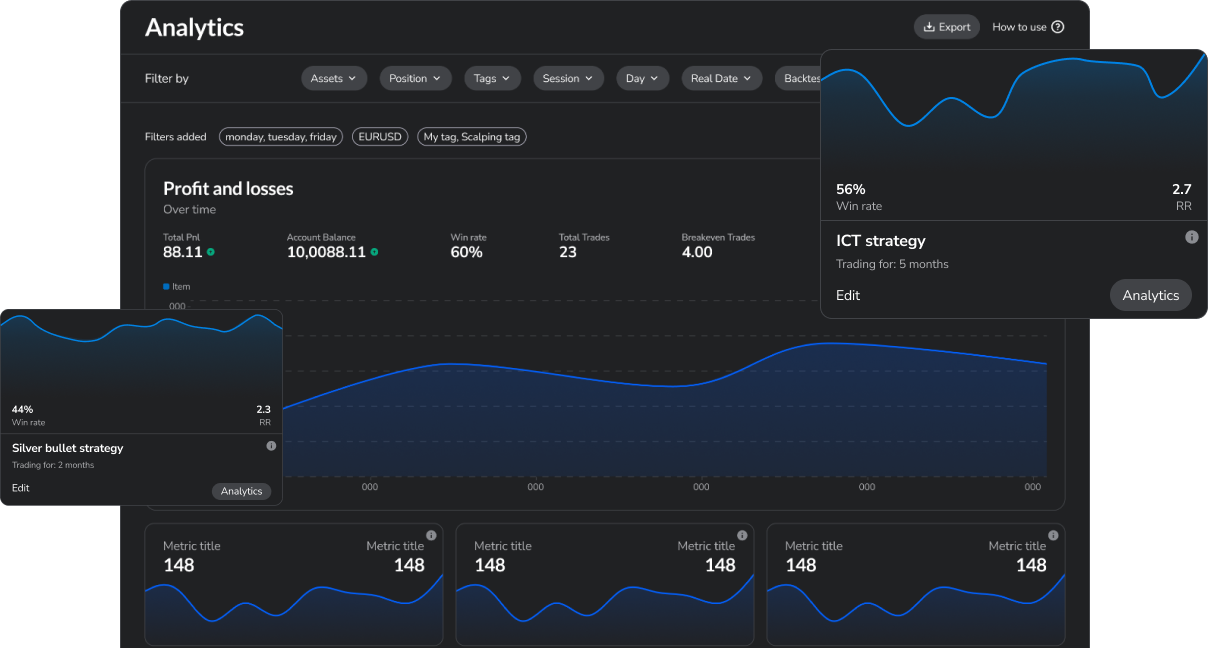Can You Backtest a Breakout Strategy? Here’s How to Do It Right
.png)
Breakout strategies are among the most popular tools in a trader’s arsenal, particularly in the forex and crypto markets. But before deploying one in a live environment, it’s crucial to rigorously backtest it. That’s where FX Replay comes in. With precision, control, and real-time data replay capabilities, FX Replay enables you to refine and validate your breakout strategy with confidence.
In this blog post, we’ll explore how to backtest a breakout strategy the right way using FX Replay — covering definitions, key metrics, step-by-step setup, and common pitfalls to avoid.
What Is a Breakout Strategy?
A breakout strategy attempts to capitalize on a price moving beyond a defined support or resistance level with increased volume. Traders look to enter positions as the price breaks above resistance (long) or below support (short), expecting continued momentum.
Breakouts are often used in:
- Range-bound market conditions
- News-driven volatility spikes
- Technical pattern formations like triangles, flags, or channels
But the challenge is separating true breakouts from false ones — which is why backtesting is essential.
Why Backtesting Matters
Backtesting allows you to simulate your breakout strategy against historical price data to see how it would have performed. When done properly, it helps answer key questions:
- Does your strategy work across different market conditions?
- What’s your win rate, risk/reward ratio, and average drawdown?
- Are you optimizing entries and exits or just curve-fitting past data?
FX Replay gives traders an edge by offering a visually interactive and dynamic environment to test these strategies as if trading live.
How to Backtest a Breakout Strategy on FX Replay
Follow these steps to conduct a robust backtest on FX Replay:
1. Define Clear Breakout Rules
Start by documenting your strategy rules:
- Entry criteria: What qualifies as a breakout (e.g., close above resistance + volume confirmation)?
- Stop loss: Will you use ATR-based stops or a fixed pip distance?
- Take profit: Do you scale out, use a trailing stop, or target a risk/reward ratio?
- Filters: Time of day, volatility thresholds, or market structure conditions?
2. Choose a Timeframe and Market
Using FX Replay, select a timeframe that matches your strategy (e.g., 15-min for intraday or 4H for swing trading). You can backtest across:
- Forex pairs like EUR/USD, GBP/JPY
- Crypto markets such as BTC/USD, ETH/USD
- Major news events or periods of consolidation
FX Replay supports high-quality data feeds and time-synced news overlays for deeper insights.
3. Replay the Market
Use FX Replay’s real-time chart playback to step through historical price action. You can:
- Pause, play, and fast-forward through candles
- Mark support/resistance levels manually
- Place hypothetical trades based on your breakout rules
This lets you simulate execution as if trading live, with zero hindsight bias.
4. Log Your Results
Manually record key trade metrics or use FX Replay’s journaling tools:
- Entry/exit prices and time
- Stop loss and take profit
- Outcome (win/loss) and R-multiple
- Notes on trade rationale
This creates a data-driven foundation for analysis and future optimization.
5. Analyze and Refine
After 50–100 trades, analyze your performance:
- Win rate and profit factor
- Max drawdown and average loss
- Effectiveness by session or day of week
Tweak your breakout criteria or filters as needed, then re-test for validation.
Common Breakout Backtesting Mistakes to Avoid
- Using hindsight: Don’t scroll through charts and cherry-pick setups. Use FX Replay’s forward-only playback to mimic live conditions.
- Overfitting: A strategy that works perfectly on past data may fail in live markets. Look for consistency, not perfection.
- Ignoring market context: Breakouts behave differently in trending vs. ranging markets. Backtest in diverse conditions.
- Skipping journaling: Without records, you can’t improve. Treat each backtest session as a professional evaluation.
Why FX Replay Is the Best Tool for Backtesting Breakout Strategies
FX Replay offers unique features that make breakout strategy testing both effective and efficient:
- Chart replay mode with realistic order placement

- Integrated journaling for data tracking

- No-code analytics with trade stats and performance metrics

- Multi-asset support (forex, crypto, and more)
.png)
- Economic calendar
.png)
Whether you’re a discretionary trader or developing a semi-systematic method, FX Replay helps you bridge the gap between theory and execution.
Ready to Backtest Your Breakout Strategy?
Join thousands of traders using FX Replay to level up their trading edge. Start your free trial today and discover how your breakout setup holds up — before you risk a single real dollar. 👉 Start Your Free Trial Now
FX Replay supports major forex pairs (like EUR/USD, GBP/JPY) and cryptocurrencies (like BTC/USD, ETH/USD), so you can test across different markets and volatility profiles.
Yes. FX Replay offers realistic chart replay, forward-only price movement, and manual trade placement—so you test strategies as if you're trading live, without hindsight bias.
Aim for 50–100 trades minimum. This provides enough data to analyze win rate, expectancy, and overall performance across different market phases.
Absolutely. FX Replay includes built-in journaling tools and no-code analytics to help track trades, evaluate metrics like R-multiples and profit factor, and refine strategies over time.











